13 Tasty Ways to Get In Your Probiotics
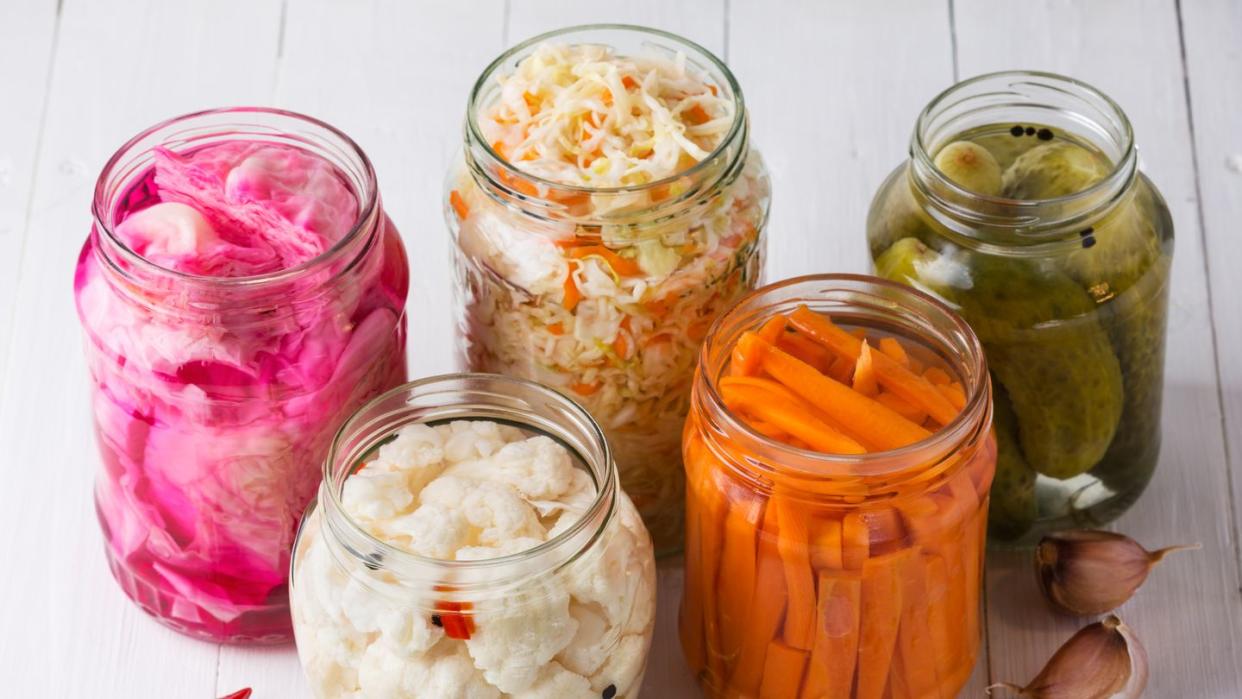
"Hearst Magazines and Yahoo may earn commission or revenue on some items through these links."
You may be familiar with the usual suspects of health and wellness: drinking water, eating vegetables, and getting your steps in. What about things like taking supplements such as probiotics? According to the Cleveland Clinic, “Probiotics are live bacteria and yeasts that have beneficial effects on the body. They help fight off the less friendly types of bacteria and boost immunity against infections.” Probiotic supplements are common and can help add to the already existing supply of friendly microbes living in your body, but you can also drink and eat your way to better probiotic health. Here are fifteen tasty ways to get in your daily dose of probiotics.
Apple Cider Vinegar
Another way to get in your daily dose of probiotics is through apple cider vinegar. “Apple cider vinegar is a probiotic food that is created through a lengthy fermentation process,” explains Paulina Lee, MSHS, RD, LD, a functional gut health dietitian and founder of Savvy Stummy, LLC. “Unfiltered or raw apple cider vinegar can contain live bacteria that may support gut health, blood sugar control, and even cholesterol levels.
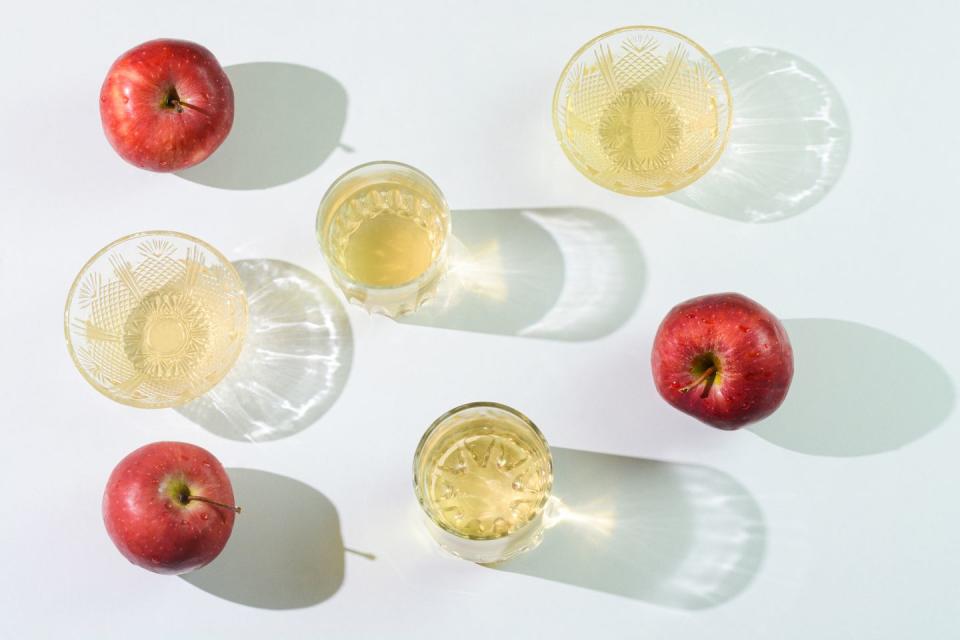
Buttermilk
“Buttermilk is a fermented dairy product or more specifically a yogurt-based drink with live cultures of lactic acid bacteria,” explains Lee. “Lactic acid bacteria in buttermilk is a probiotic that provides healthy support for your gut and immune system by helping to break down and absorb nutrients.”
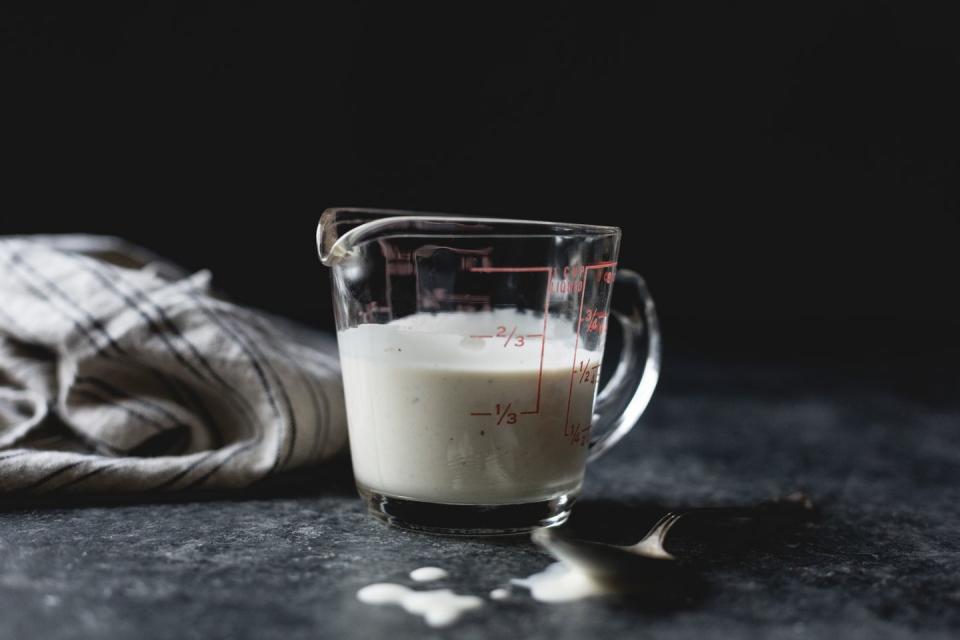
Cottage Cheese
Some cheese, like cottage cheese, contains probiotics. According to the Cleveland Clinic, “The curdling process used to produce cottage cheese adds beneficial bacteria that can promote better gut health.” Just be sure to check the label for active and live cultures to ensure your cottage cheese contains probiotics.
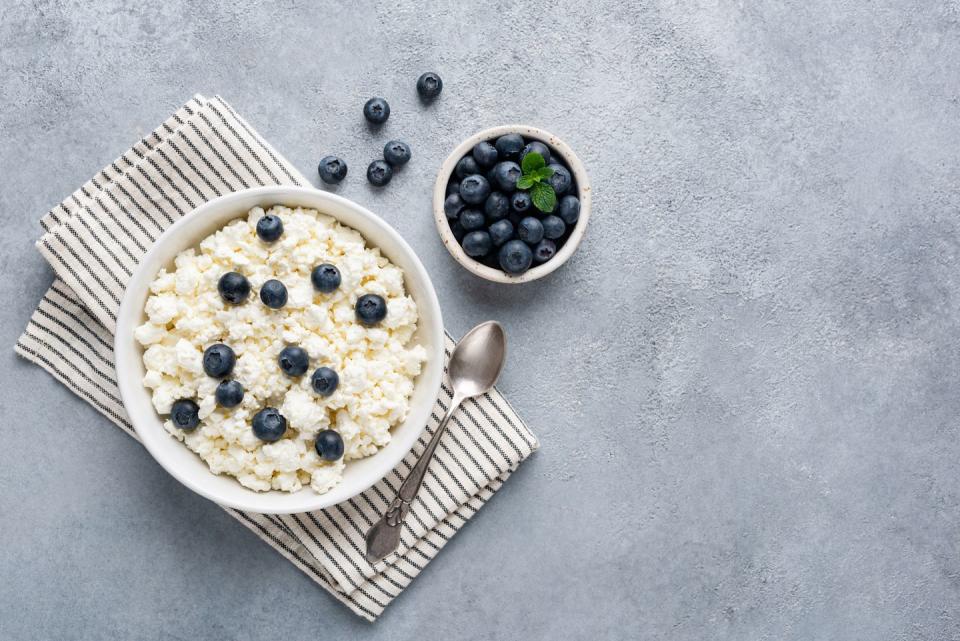
Greek Yogurt
“Greek yogurt is created from milk that has been fermented by probiotics, like lactic acid bacteria or bifidobacteria,” explains Lee. “Greek yogurt often contains Lactobacillus acidophilus and Lactobacillus casei that are known to increase good bacteria in the gut and improve digestion.” Greek yogurt is also high in protein so if you are looking for more ways to enjoy more protein, reach for Greek yogurt.
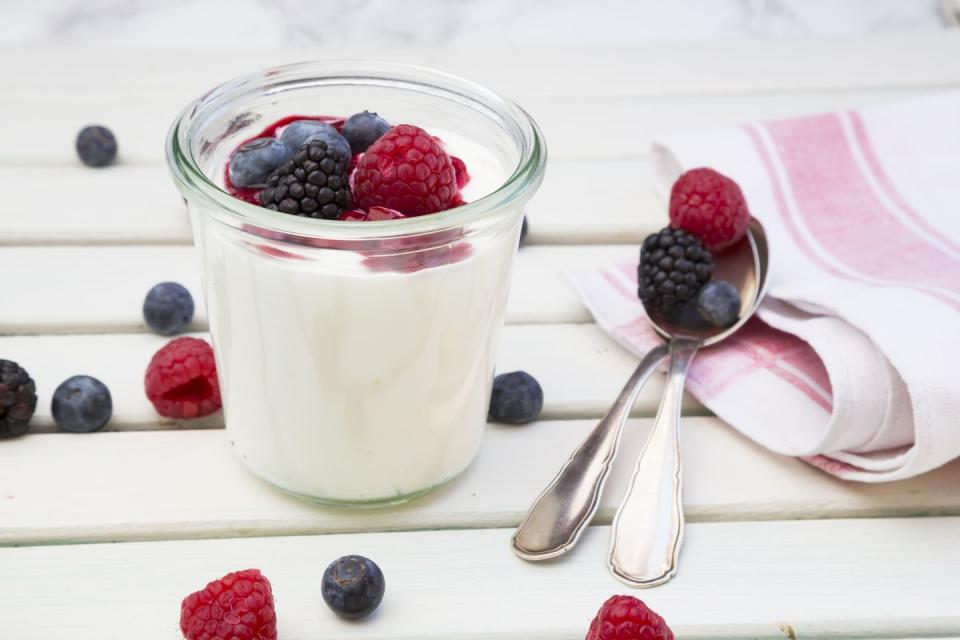
Kefir
Kefir is a fermented milk drink, and many fermented foods naturally contain probiotics. According to the Cleveland Clinic, “Like other foods that contain probiotics (good bacteria) and postbiotics (bacteria byproducts), kefir boosts gut health and provides a number of other health benefits.” Enjoy on its own with brands like Lifeway and its kefir line or add a splash to smoothies.
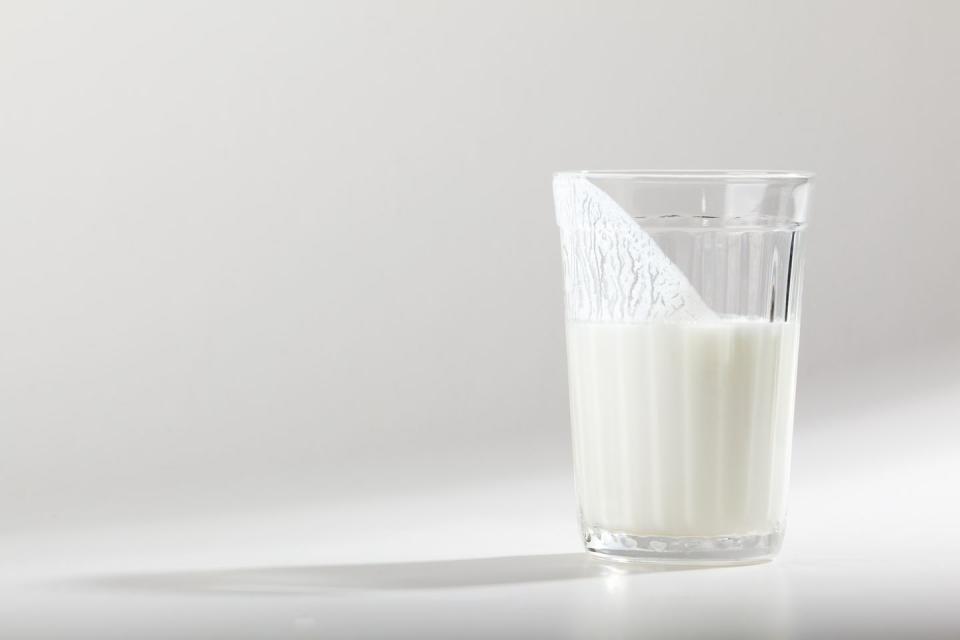
Kimchi
Kimchi is a popular Korean side dish that’s usually made from fermented cabbage or other fermented vegetables, such as radishes. It is usually flavored with seasonings and spices such as garlic, ginger, red chili pepper flakes, salt, and scallions. Not only is it delicious, but it also contains probiotics due to the fermentation process.
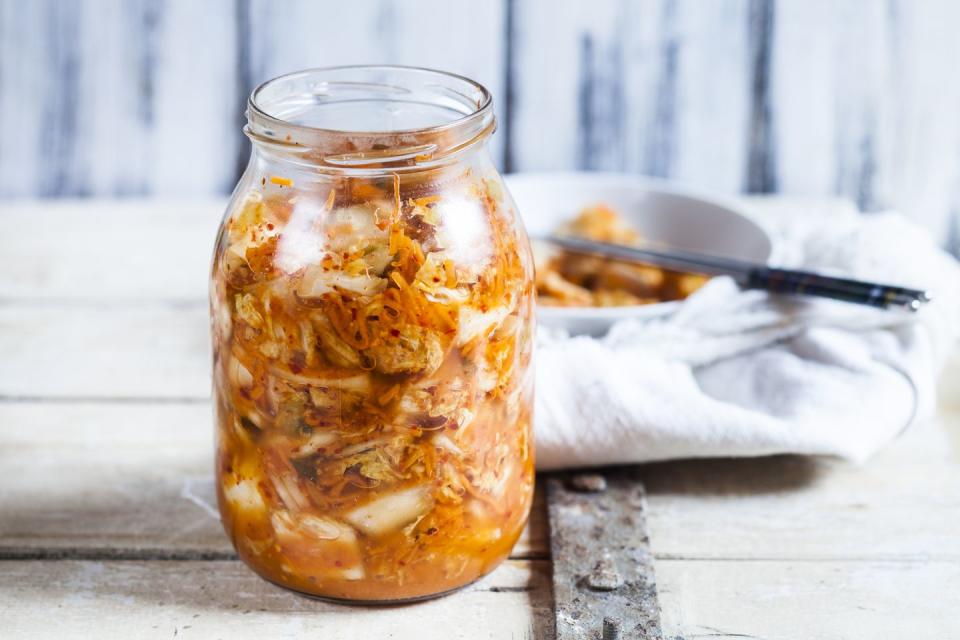
Kombucha
Kombucha is a fermented tea made from black tea or green tea. It is a beverage that is flavorful, fizzy, and subtly tart at times. According to the Cleveland Clinic, fermented foods such as kombucha, contain probiotics. “Kombucha can really help feed and increase that good, healthy gut bacteria, which can help decrease any bad bacteria,” writes the Cleveland Clinic. “Maintaining that balance can have positive benefits on your digestive system and overall health and longevity.” Matthew Kadey, MS, RD. says, “Fermented drinks, like kombucha, provide an accessible outlet to get your daily dose of probiotics to support your gut microbiome and immune system. Some brands like Koe Kombucha, in particular, do not have the sour aftertaste traditional kombucha does, but is packed with billions of live probiotics to support better gut health.” Plus, it is super delicious and easy to enjoy on the go. Other great options include Health-Ade and Wildwonder, which offer both prebiotics and probiotics. It is a win-win!
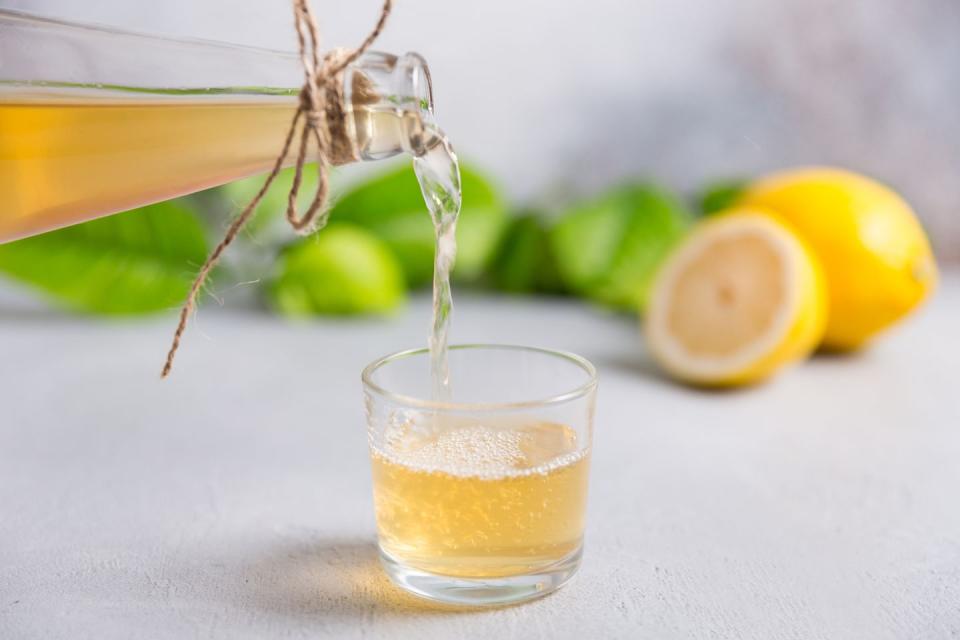
Miso
Miso is a common seasoning in Japanese cuisine that is made by fermenting soybeans with salt and koji, which is a type of fungus. According to Lee, because this fungus is a probiotic, miso has potent anti-H Pylori activity, contains highly active enzymes, and may help with constipation or digestive problems, like irritable bowel disease. Miso is typically salty in taste and is often used to make miso soup, which you may have had the last time you ordered sushi. The soup is a flavorful dish made of miso paste and stock.
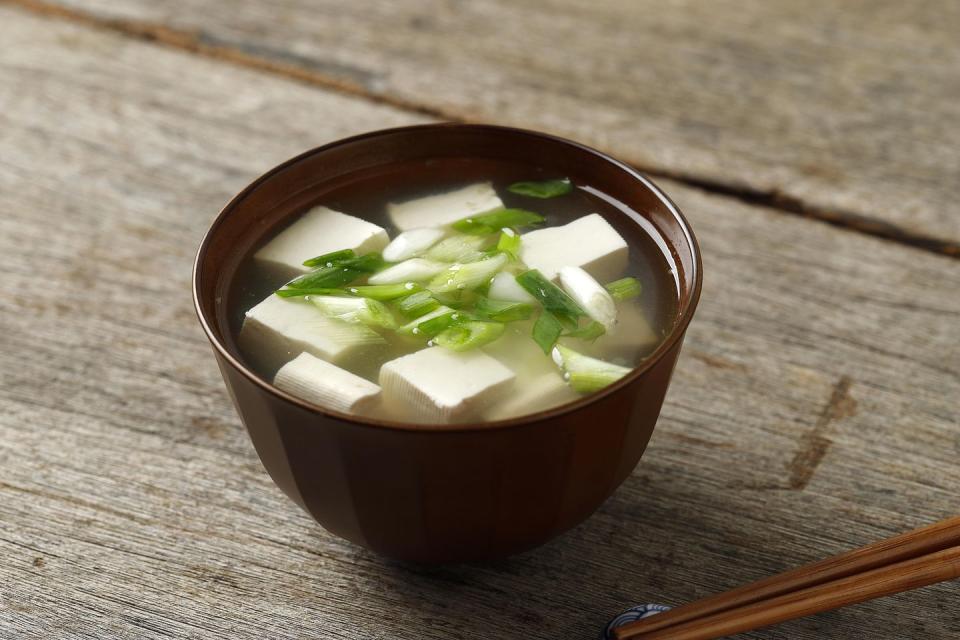
Natto
Similar to tempeh, “Natto is soybeans fermented with Bacillus bacteria, which produces many enzymes and vitamin K2, while also supporting the metabolic activity of the gut microbiome,” says Lee. Natto can be enjoyed in a bowl of rice or on a slice of toast.
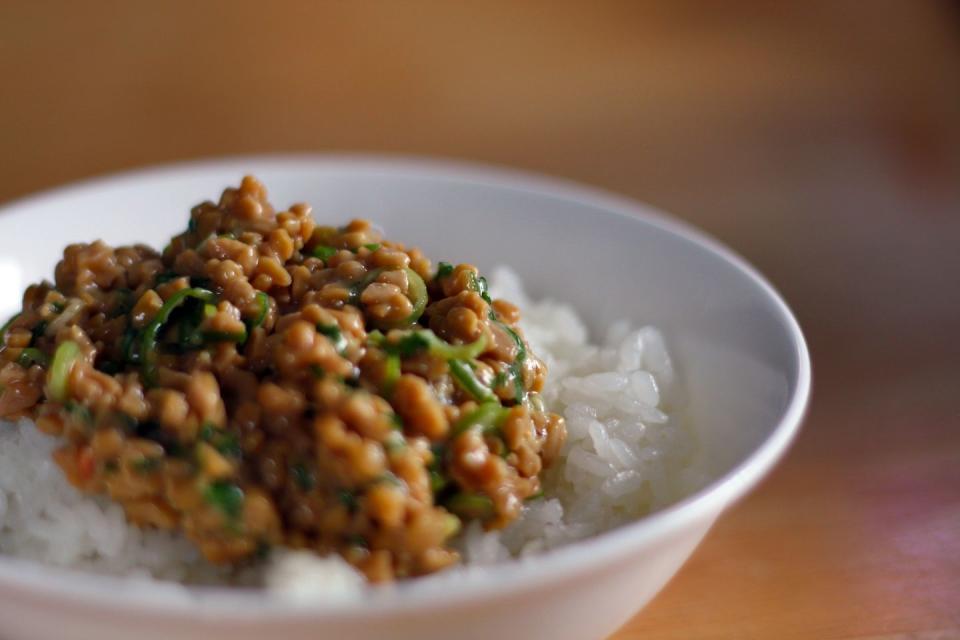
Pickles and Pickle Juice
According to the Cleveland Clinic, naturally fermented pickles, and their juice, contain helpful microorganisms also known as probiotics. However, the key here is naturally fermented so do not think that a jar of pickles straight off the grocery store shelf will do the trick. Head straight to the refrigerated section when looking for pickles with probiotics.
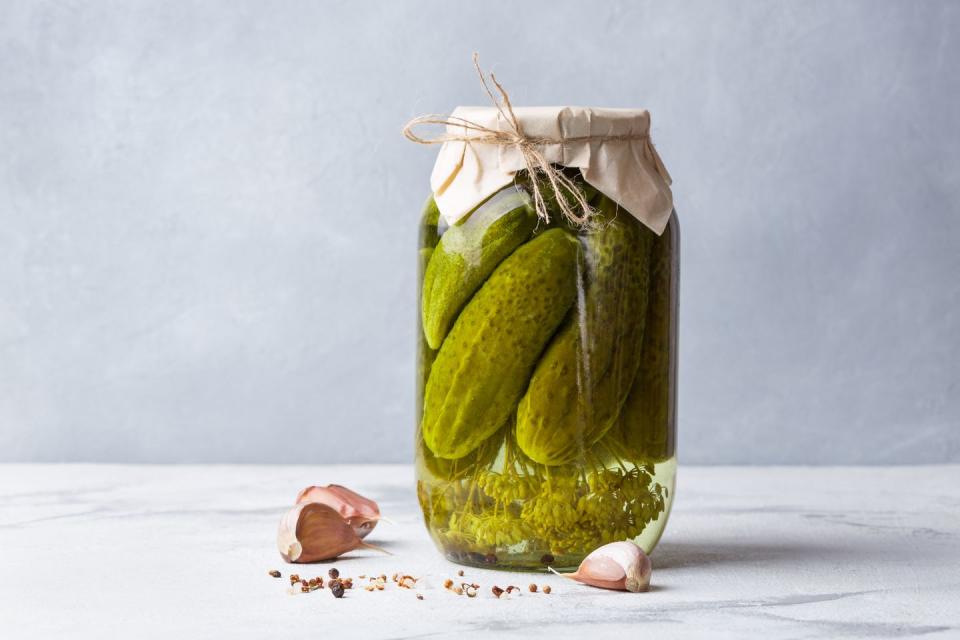
Sauerkraut
Sauerkraut is finely shredded cabbage that has been fermented by lactic acid bacteria, contains probiotics that can support your immune system, improve digestion, and may reduce stress, shares Lee. Salty and sour in taste, sauerkraut is often used as a topping for sausages or as a side dish. Always be sure to purchase unpasteurized sauerkraut as pasteurization kills the live and active bacteria that contain any probiotics.
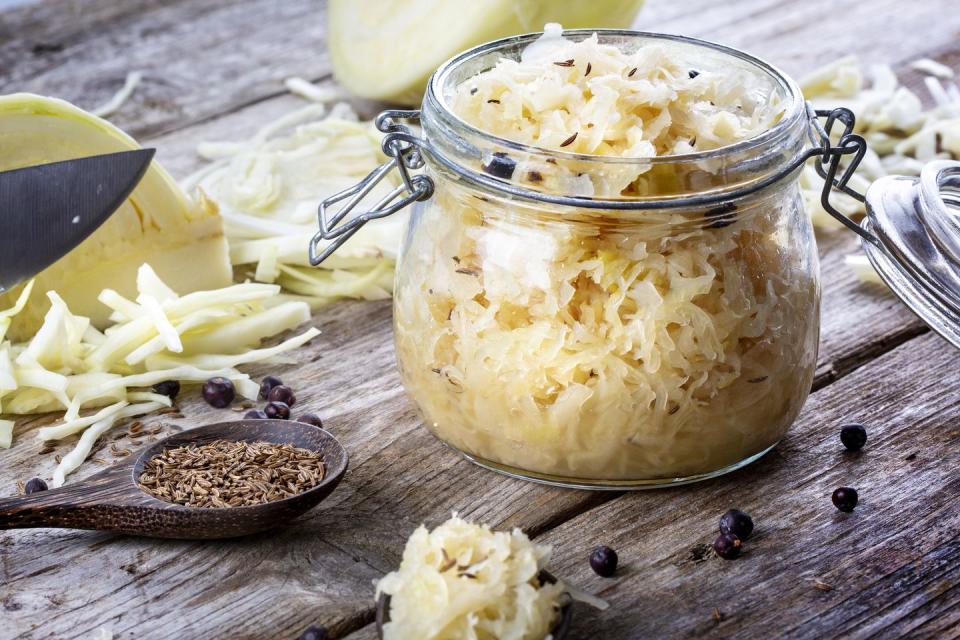
Tempeh
Lee says, “Tempeh is a fermented soy product that can increase healthy gut bacteria and has antioxidant properties,” shares Lee. It usually comes in the form of a pressed-down cake or patty. Earthy and nutty in flavor, tempeh is a popular option for vegetarians as a high-protein meat substitute and is often used in stir-fries.
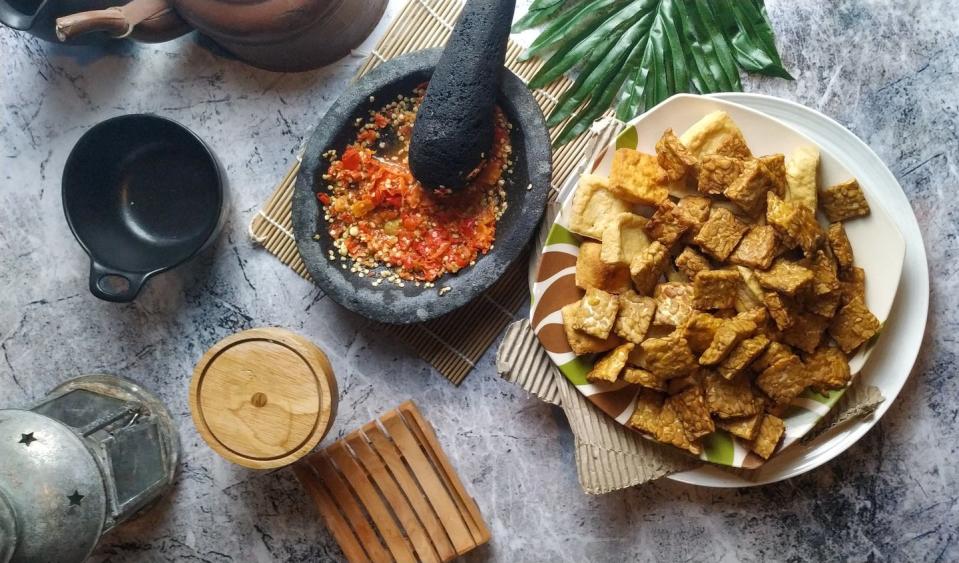
Yogurt
According to Harvard Health, yogurt is considered the all-star of probiotic foods because it has a flavor and texture that most Western palates enjoy. “The number and type of bacteria species can vary depending on the yogurt brand. The probiotic content of yogurt products can range from 90 billion to 500 billion CFU per serving. (CFU stands for colony-forming units, which is how many bacteria can divide and form colonies.)” Just be sure to look for the words "live and active cultures" on the label when purchasing yogurt to make sure you are getting your daily dose of probiotics.
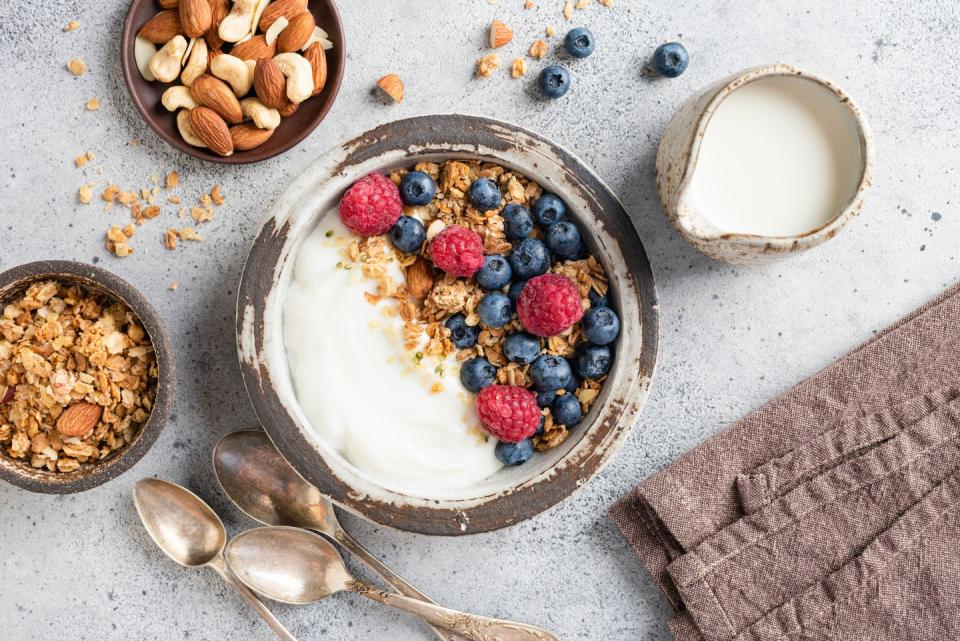
You Might Also Like

